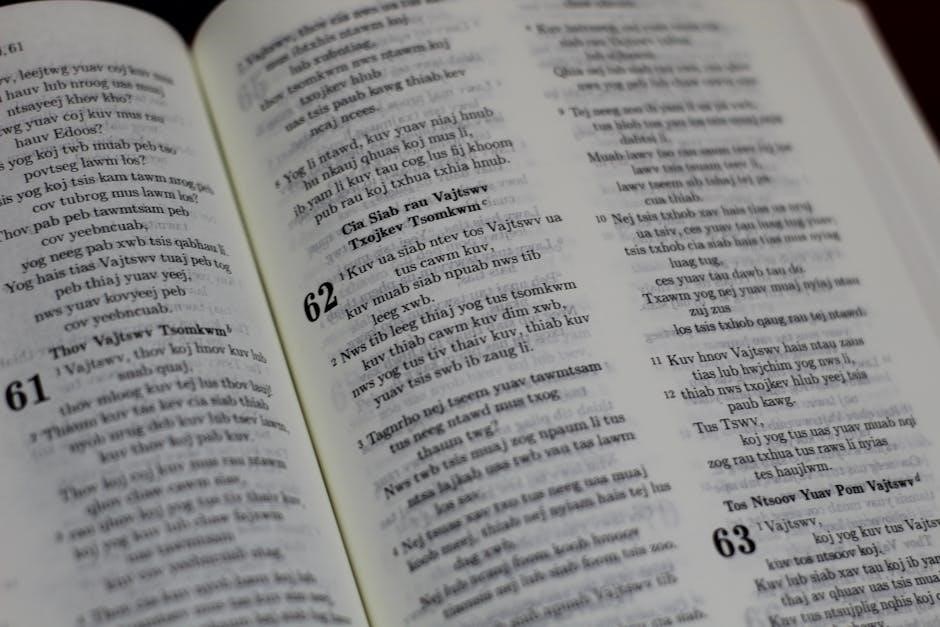Shoulder stability exercises are crucial for protecting against injury and enhancing daily activities. These exercises strengthen muscles, ligaments, and connective tissue around the shoulder joint, promoting better mobility and function. They are often used in physical therapy.
What are Shoulder Stabilization Exercises?
Shoulder stabilization exercises are targeted movements designed to strengthen the muscles surrounding the shoulder joint. These exercises focus on improving the function of the rotator cuff and scapular muscles, which are vital for joint stability. They aim to prevent excess motion and maintain proper joint alignment, crucial for both everyday tasks and athletic performance. These exercises help in rehabilitation and injury prevention, promoting long-term shoulder health.

Importance of Shoulder Stability
Shoulder stability is essential for performing daily activities and preventing injuries. A stable shoulder allows for a full range of motion and reduces the risk of dislocations and pain; Proper stability ensures optimal shoulder function.
Why is Shoulder Stability Important?
Shoulder stability is paramount because the shoulder is a highly mobile joint, making it prone to instability. Adequate stability ensures smooth, controlled movements, preventing excessive motion that can lead to pain or injury. Strong shoulder muscles and connective tissues maintain proper joint alignment, allowing for effective function in everyday tasks and sports activities, thus reducing the risk of dislocations and other issues.
Consequences of Shoulder Instability
Shoulder instability can lead to a range of problems, including pain, discomfort, and a feeling of weakness in the joint. It can result in dislocations or subluxations, where the shoulder partially or fully slips out of its socket. This instability may limit the ability to perform everyday tasks and recreational activities. Furthermore, it can cause muscle imbalances and increase the risk of further injury.
Benefits of Shoulder Stabilization Exercises
Shoulder stabilization exercises offer pain reduction, injury prevention, and improved shoulder function. They strengthen muscles, enhance mobility, and help maintain proper joint alignment and stability.
Pain Reduction and Injury Prevention
Engaging in consistent shoulder stabilization exercises can significantly reduce pain by strengthening the supporting muscles and tissues. These exercises help correct muscle imbalances that often lead to discomfort. Moreover, by improving joint stability and control, they play a vital role in preventing future shoulder injuries, such as dislocations or rotator cuff tears, ensuring long-term shoulder health. Strengthening the shoulder area also helps with proper alignment.
Improved Shoulder Function
Regular shoulder stabilization exercises lead to enhanced overall shoulder function by improving the range of motion and increasing strength. These exercises promote better control of the shoulder joint, allowing for smoother and more efficient movements during daily activities and recreational sports. Strong, stable shoulders enable you to perform tasks with greater ease and confidence, reducing the risk of strain or injury due to weakness or instability. This also improves overall posture.

Types of Shoulder Stabilization Exercises
Shoulder stabilization exercises include scapular stabilization exercises and rotator cuff strengthening; These focus on different muscle groups, working together to provide comprehensive support and stability for the shoulder joint.
Scapular Stabilization Exercises
Scapular stabilization exercises are vital for normal shoulder movement patterns. These exercises strengthen the muscles around the shoulder blade, improving posture and enabling optimal shoulder joint function. They help prevent muscle imbalances that can negatively affect the shoulder’s position. Examples include exercises that target the upper back muscles, like band pull-aparts, which contribute to shoulder stability and overall posture.
Rotator Cuff Strengthening
Rotator cuff strengthening is essential for shoulder stability, as these muscles form a cuff around the upper arm bone. These exercises focus on the four muscles originating from the shoulder blade. Strengthening these muscles is key to preventing injuries and improving overall shoulder function. Exercises like resistance band internal and external rotations are effective for targeting the rotator cuff muscles.

Specific Exercises with Steps
This section details specific exercises to enhance shoulder stability, including stretches and strengthening movements. Each exercise includes step-by-step instructions to ensure correct form and maximize benefits, utilizing resistance bands and body weight.
Doorway Chest Stretch
Stand in a doorway with forearms resting on the frame, elbows bent at chest height. Step one foot forward, gently pushing your hips and chest through the doorway while keeping forearms in place. You should feel a stretch across your chest and arms. Return to the starting position. This helps to counteract tight pectoral muscles, which can lead to shoulder imbalances, improving posture and preventing potential injuries.
Cat Cow Stretch
Begin on your hands and knees, aligning hands under shoulders and knees under hips. Gently round your back towards the ceiling, tucking your chin to your chest; Then, arch your back toward the floor, lifting your head and gaze towards the ceiling. This exercise promotes rib cage and upper back mobility, which enables proper shoulder blade function and posture, thus protecting the shoulder joints, improving overall range of motion.
Open Book Stretch
Lie on your side, head supported by a pillow. Extend both arms straight in front of you, resting on the floor, legs stacked, knees bent towards your chest. Reach your top arm up and back, turning your body to the opposite side, keeping the arm straight. Allow your chest to open towards the ceiling. This movement enhances thoracic spine mobility, mid-back flexibility, and stretches the pecs, improving overall shoulder range of motion.
Resistance Band Internal Rotation
Secure a resistance band to a door handle. Hold the other end, closest to the door, with your elbow bent at 90 degrees and forearm pointing towards the door. Step away to create tension. Rotate your arm, moving your hand towards your ribs, keeping your elbow tucked and bent. This exercise targets the rotator cuff muscles, which are key for shoulder stabilization. Relax and return to the starting position.
Resistance Band External Rotation
Anchor a resistance band to a door handle. Hold the opposite end, furthest from the door, with your elbow bent at 90 degrees and forearm across your belly. Step away to create tension. Rotate your hand outward, stretching the band, while keeping your elbow bent and close to your body. This exercise strengthens the rotator cuff muscles, further enhancing shoulder stability. Relax and return to the initial position.
Band Pull Apart
Begin by standing tall with a resistance band held in both hands, palms facing down, and arms extended at chest height. Keep a slight slack in the band. Open your arms out to the sides, stretching the band, while maintaining your arms at chest level. This exercise works the upper back and promotes better posture, preventing muscle imbalances. Avoid shrugging your shoulders. Return to the starting position.
Forward Shoulder Raise
Stand with your arms relaxed at your sides. Slowly raise one arm straight in front of you, towards the ceiling, keeping the arm extended. Pause briefly at the top of the movement, then gently lower your arm back down to your side. This exercise strengthens the anterior deltoid muscle, which is important for shoulder stability when lifting objects. Maintain a controlled movement throughout.
Lateral Shoulder Raise
Begin standing with your arms by your sides. Lift your arms out to the sides, reaching shoulder height, with a slight 45-degree angle forward, not directly to the side. Focus on a controlled lift, avoiding shrugging your shoulders. Pause briefly at the top before slowly lowering your arms back down. This exercise strengthens the middle deltoid muscle, enhancing shoulder stability for lateral movements.
Dosage and Frequency
Optimal exercise parameters for shoulder stabilization are still under research. Begin slowly, focusing on form, and gradually increase intensity as strength improves. Consistency is key for long-term benefits.
Optimal Parameters and Progression
While specific parameters are still being studied, it’s generally advised to start with lighter resistance and focus on proper form. Gradually increase the intensity, repetitions, or sets as your strength improves. Pay attention to your body and avoid pain. Consistent, progressive training is essential for optimal results and long-term shoulder health. Beginners should seek guidance from a fitness professional for technique.

Safety and Precautions
It’s crucial to avoid pain during shoulder stabilization exercises. If you experience any discomfort, stop immediately. Consulting a healthcare professional is important, especially with a new injury or pain.
When to Consult a Professional
If you have a new shoulder injury, experience pain at rest, or feel any sharp pain during exercises, it is vital to consult a healthcare professional. They can assess your specific situation, provide a proper diagnosis, and guide you on appropriate exercises. Ignoring pain can worsen a condition and delay recovery. A physical therapist can create a personalized plan based on your needs.
Pain Management During Exercise
It’s crucial to listen to your body while performing shoulder stabilization exercises. You should not experience pain during exercise. If you feel any pain, stop immediately and ease off the activity. Do not ignore pain, as it can indicate an injury or improper form. Start slowly and gradually increase the intensity. If pain persists, consult with a doctor or physical therapist for guidance.
Role of Physical Therapy
Physical therapy is a key element in shoulder rehabilitation. It offers personalized exercise plans, helping to build strength, improve mobility, and effectively reduce pain. Virtual programs can also provide convenient access.
Personalized Exercise Plans
Physical therapy provides customized exercise plans tailored to individual needs. These plans address specific shoulder issues, considering factors like injury history and pain levels. A physical therapist can guide you through appropriate exercises, ensuring proper form and progression. This personalized approach maximizes the benefits of shoulder stabilization exercises and promotes effective rehabilitation. This is an important part of the recovery process.
Shoulder stabilization exercises are vital for long-term shoulder health, reducing pain, and preventing injuries. Consistent practice, combined with professional guidance, ensures optimal shoulder function and overall well-being.
Key Takeaways and Long-Term Benefits
Consistent engagement in shoulder stabilization exercises yields significant long-term advantages, including enhanced shoulder function, reduced pain, and decreased risk of injury. These exercises improve muscle strength and flexibility, crucial for daily activities and recreational pursuits. By strengthening the supporting structures of the shoulder, you promote stability, prevent imbalances, and maintain overall shoulder health, leading to a more active and pain-free life.








































